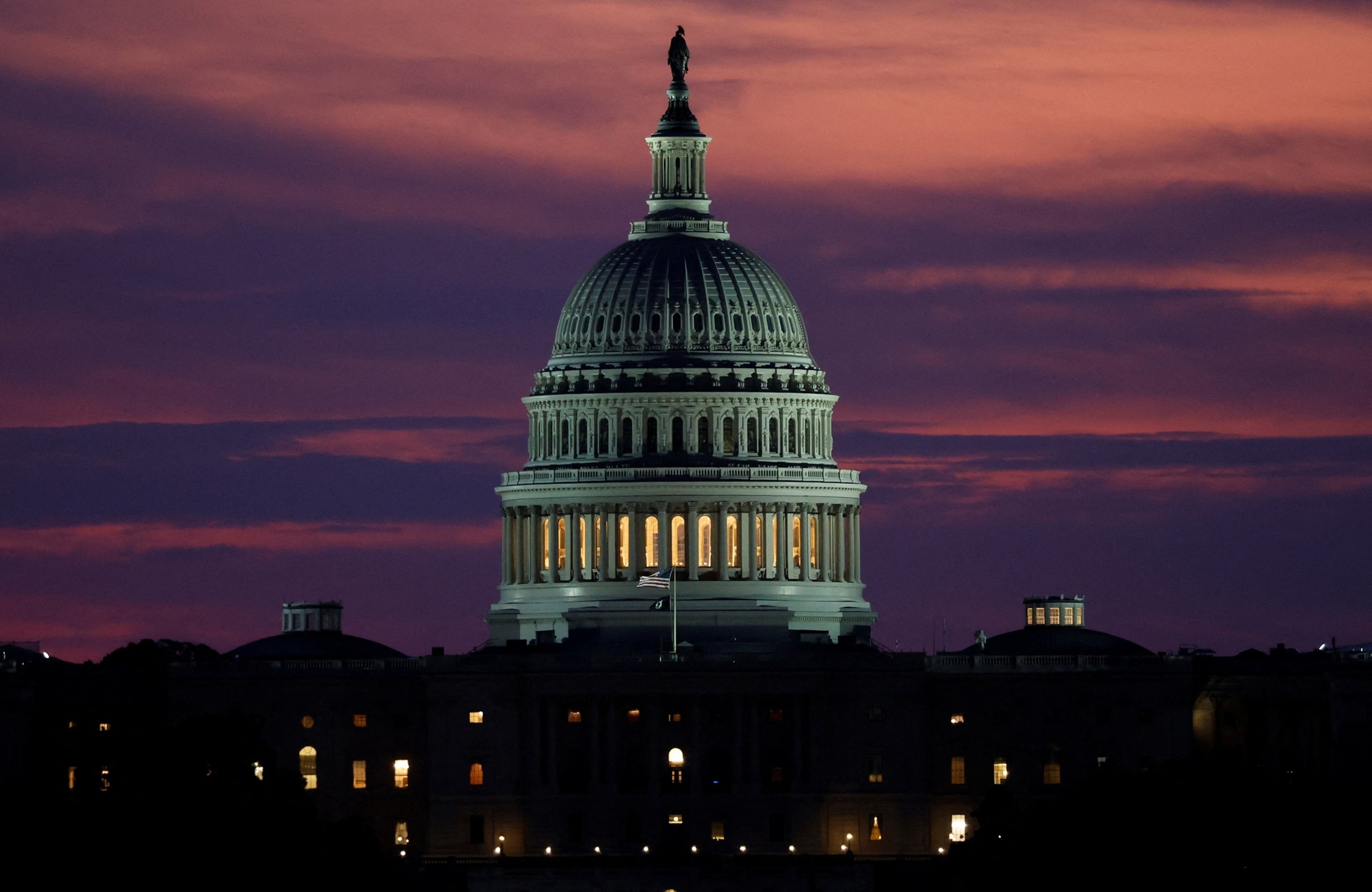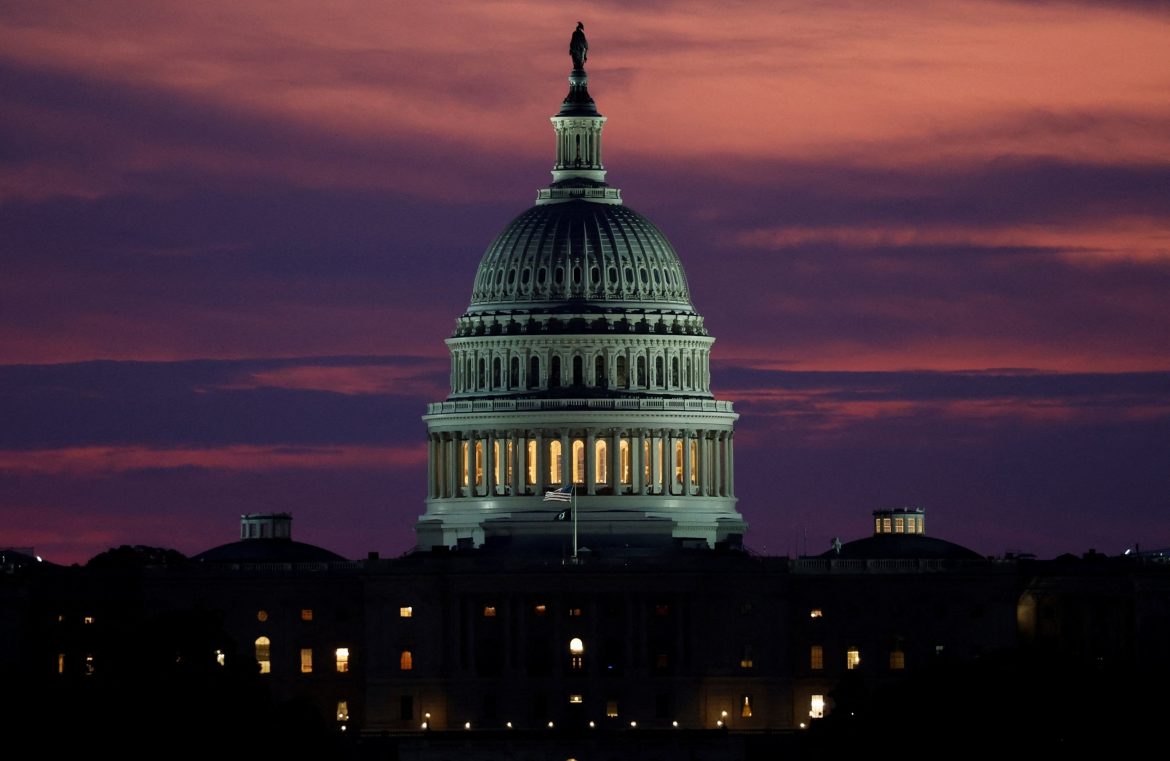

An impending government shutdown might leave countless federal workers without wages and stall crucial economic indicators — including the highly monitored Bureau of Labor Statistics jobs report — for the time being.
With just four days remaining, Congress must reach a consensus on a stopgap bill to ensure federal government funding continues beyond Tuesday.
As the deadline approaches, both Republican and Democratic leaders are firmly opposing each other, increasing the likelihood of a shutdown.
Republicans, who possess slim majorities in both the House and Senate, are seeking to pass a “clean” measure to extend funding temporarily.
On the other hand, Democrats are advocating for the stopgap to incorporate healthcare safeguards, which would extend enhanced premium tax credits under the Affordable Care Act that are due to expire by year-end. These credits help lower the costs of health insurance premiums for a broader range of Obamacare participants.
A funding measure necessitates 60 votes for approval in the Senate, indicating it cannot succeed with only the 53 Republicans in that chamber voting in favor.
This week, President Donald Trump amplified the political standoff by cancelling a planned meeting with Senate Minority Leader Chuck Schumer and House Minority Leader Hakeem Jeffries, the New Yorkers who lead the Democratic factions in their respective chambers.
On Wednesday, Trump’s Office of Management and Budget heightened the urgency by issuing a memo instructing federal agencies to brace for mass layoffs should a shutdown occur.
Each party is counting on the public to assign blame to the other for a shutdown. Nonetheless, regardless of political gains, a shutdown will significantly affect a vast range of services and programs.
It may also prompt unprecedented measures from the Trump administration, which has prioritized government downsizing.
What is a government shutdown?
To finance government operations for the next fiscal year, Congress must pass a set of 12 appropriations bills by Tuesday. However, none of these 12 bills have been approved ahead of this cut-off.
Failure to enact a short-term funding act designed as a “continuing resolution” will result in a government shutdown.
Since 1980, there have been 14 shutdowns, as reported by the Bipartisan Policy Center.
If Congress manages to pass only some of the annual appropriations bills on time, the government will face a partial shutdown.
This situation occurred in late 2018 — during Trump’s initial term — when the government was partially shut down for a record five weeks due to disagreements over funding for Trump’s U.S.-Mexico border wall.
How will federal employees be affected?
During a shutdown, non-essential federal workers may be furloughed, which means they are compelled to take an unpaid leave.
In the last complete government shutdown in 2013, nearly 850,000 employees were furloughed, according to the Committee for a Responsible Federal Budget.
The U.S. has over two million civilian federal employees.
Though furloughed workers are promised back pay upon returning to work, federal contractors have historically not received such compensation, according to CRFB.
What services and agencies will be affected?
A shutdown will directly impact non-essential government agencies and programs that depend on discretionary spending allocated annually.
Previous shutdowns have resulted in the closure of numerous national parks and museums, reduced veteran services, halted health inspections, delayed immigration hearings and various other consequences.
Discretionary spending constitutes 27% of the fiscal 2024 budget, based on the Peter G. Peterson Foundation.
Essential services would continue functioning, but might still experience indirect effects, and certain federal employees are labeled “excepted,” thereby still required to work during a shutdown.
Essential services include those associated with national security, law enforcement, air traffic management, and inmate control.
Programs funded through “mandatory” spending — which is either permanently authorized or authorized for multiple years — would generally persist, although they might still experience shutdown effects.
During a 1996 shutdown, Social Security payments were still issued. However, Social Security Administration staff responsible for new enrollments and other services were initially furloughed.
What about economic reports?
A shutdown could postpone the release of important economic reports that the government typically publishes, which are closely monitored by financial markets.
Without a resolution, the government will shut down just days prior to the Bureau of Labor Statistics issuing its September monthly jobs report.
Wells Fargo economist Michael Pugliese pointed out this week that following the last full government shutdown in 2013, the monthly jobs and consumer price index reports “were delayed by about two weeks.”
“Collection, processing and publication delays extended into the subsequent month,” Pugliese added.
The next BLS employment report is scheduled for release on Oct. 3. The BLS’s Consumer Price Index data for September is set to be released on Oct. 15.
In the partial shutdown that began in late 2018, Pugliese observed, “the initial assessment of” gross domestic product growth for the fourth quarter of that year “was postponed by about a month, as was data from December 2018 on retail sales and spending and personal income.”
— CNBC’s Emily Wilkins contributed to this story.

